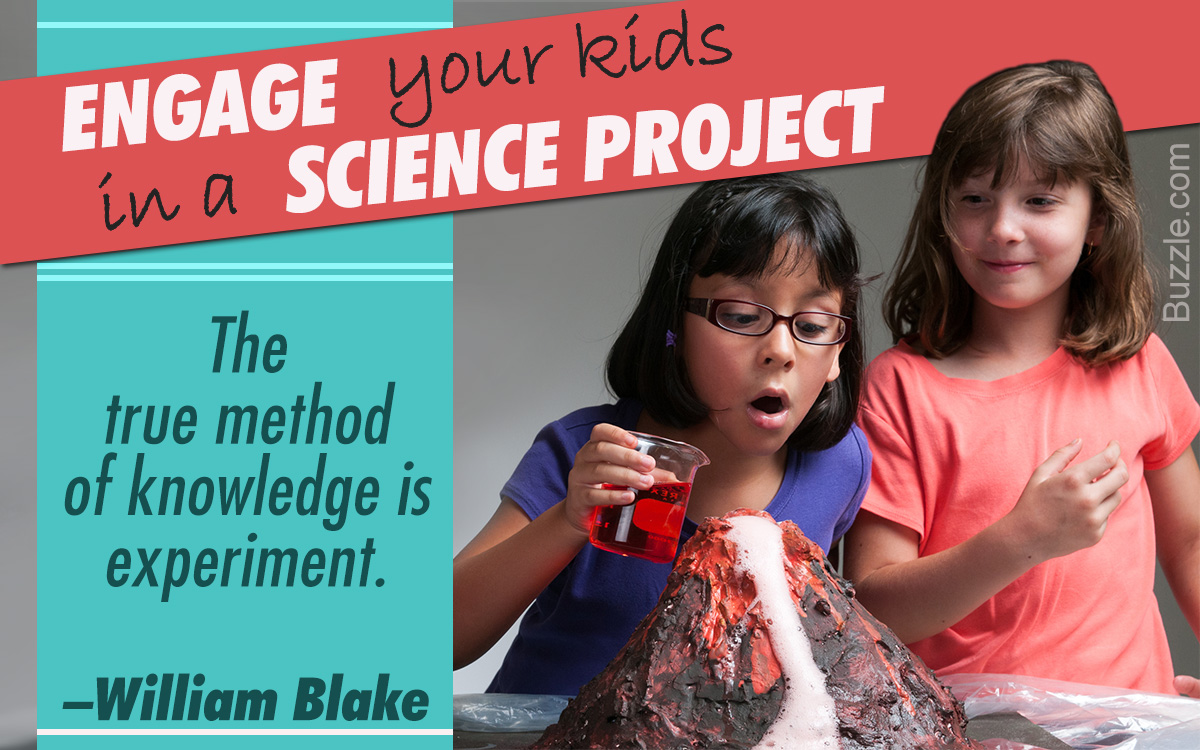
Here are some interesting 7th grade science fair projects for students. The volcano model and electricity project are worth the effort spent on them. A short list presented at the end of the article should also provide some interesting ideas for projects.
Science fair projects at 7th grade become a bit more challenging than ones earlier grades. One has to be more creative while making projects at this level. You can make winning 7th grade science fair projects by offering something interesting with the help of fundamental concepts of science. The demonstration should be conducted in an easy to understand manner.
Science Fair Projects for 7th Grade Students
Few of the interesting and easy-to-do projects are presented in the following paragraphs. The 7th grade science projects provided below would prove to be helpful for students who are in search of some interesting ideas.
Volcano Model
Preparing a working model of volcano is one of the easiest projects. Materials needed for this project are a wooden plank (which serves as a base for the volcano), baking powder (1 tbsp), dish washing powder (1 tbsp.), vinegar (¼ cup) and red food color. A model of volcano can be prepared by using the paper mache technique. Once the model is ready, a mixture of baking powder, dish washing powder and red food color should be poured into the hollow space of the volcano. Demonstration of active volcano is conducted by adding vinegar to the mixture.
Bridges
The basic idea used in the project of bridges is to test the different bridge forms on the basis of parameter of weight-bearing capacity. One can experiment with different types of bonding agents and materials while constructing these bridges. Kids can learn a lot about properties of different types of materials through this experiment.
Studying Photosynthesis
In this project, one has to make observations pertaining to growth of plants in differing light conditions. The same variety of plants should be grown in different rooms where they receive varying amounts of light. Differences observed in their growth should be documented and presented during the science fair.
Studying the Effect of pH on Plant Growth
This project is easy to understand however, quite lengthy and tedious in terms of executing it. The project becomes lengthy because here, you have to monitor the growth of plant over a certain period of time. The basic idea behind doing this project is to study the difference in growth of plants by supplying them water with varying pH values. Use of radishes, carrots, etc. makes the process of comparing these results much more easier. For example, you can easily compare the weight of radishes and derive conclusions regarding the effect of pH on their growth.
Bottle Electricity
The tools needed for this project include a pair of scissors and glue stick. An aluminum film canister foil (35 mm), sticky tape and wire are the other materials required for this project. A tool for stripping the wire insulation also is needed. Directions for this project are simple to understand and you shouldn’t face any problem provided you follow the step-by-step procedure given below.
- The aluminum foil should be cut into rectangular shape and lined inside the canister by means of glue. Edges of the foil should be smooth; the smooth edges prevent the charge from leaking.
- Lid of the canister should be pierced with some sharp object. The purpose is to make a hole, large enough for a wire to be threaded.
- The wire (7-8 cm in length) passed through this hole should be stripped at both ends. The wire end which is inside the canister should be taped to the foil.
- Insulation should be scraped off at a length where it (wire) just pokes out of the canister. The stripped portion helps in creating a discharge loop.
- Next step in the process is to tape another aluminum foil to the canister from outside. A wire (4-5 cm long) should be taped to this foil. One end of the wire remains attached to the foil while other end meets the discharge loop; this end shouldn’t be connected to the discharge loop.
- There is no need to use the expensive equipment like Wimshurst machine or generators for supplying electricity. A small amount of charge can be generated even by rubbing the longer wire with woolen fabrics or rubber materials (balloons).
List of Few Interesting Project Ideas
Here are few more easy-to-perform experiments and projects for 7th graders.
- Understanding the relation between color and heat absorption.
- Studying the working of an air-conditioner.
- Finding out the best material for insulation.
- Making a simple electroscope at home.
- Making a compass from items of day-to-day use.
- Studying the difference between ice made from distilled and tap water.
- Undertaking the study of different designs of windmills (to determine their efficiency).
- Understanding how liquids like soda, vinegar, water, etc. affect the process of decomposition of organic matter.
- Studying the effect of salt on the process of rusting.
- Comparing the process of melting of ice in salt water and fresh water.
- Studying the effect of particle-size of sand on durability of bricks.
- Studying the process of making colored glass.
- Studying the changes in water density that result from changes in temperature.
The simple science fair projects presented above should be useful for 7th graders. One would want to try as many different ideas as possible. The ideas given in the article should offer a direction for further research.




